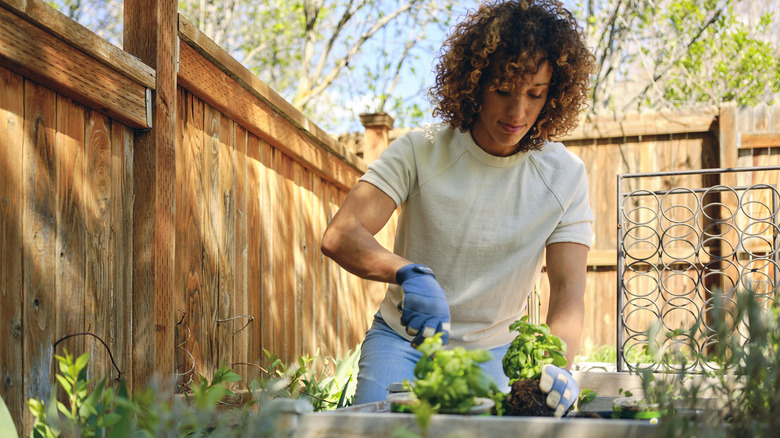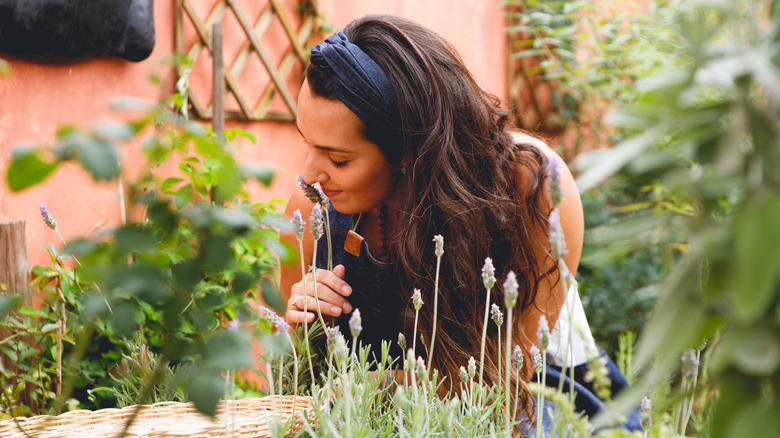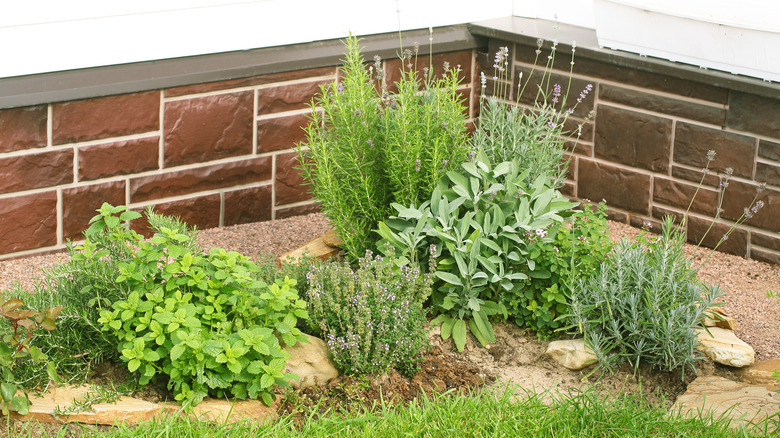Keep Pests Out Of Your Garden With This Powerful Trio Of Popular Herbs
Herbs are the perfect type of plant to grow if you don't have a green thumb because they are low-maintenance and come with lots of benefits. Not only do some herbs have medicinal properties, but you can also use the leaves for flavoring your meals. Lavender, sage, and thyme are a few plants that are essential for any herb garden. They have all the natural benefits of herbs, including pest-repellent properties.
You can plant lavender, sage, and thyme as an organic means to keep pests out of your garden. Since each herb has similar sunlight, soil, and water requirements, they can be grown together without competing for resources. While they all repel pests, each herb tackles a variety of critters, so planting all three truly spruces up your outdoor space. The fragrant plants will make your garden smell spectacular and also look beautiful with lavender's purple flowers, sage's textured leaves, and thyme's tiny foliage and pink petals.
Lavender, sage, and thyme are naturally good for pest control
Lavender attracts desirable critters to your garden, like bees, butterflies, and pollinators, but it can repel unwanted ones. The pest control comes from the oils within this herb's leaves. It is the same one used for lavender essential oil and the component that gives the purple flower a unique aroma. Most love the sweet smell, and it's a popular scent for cosmetics, but mosquitos, moths, flies, and fleas can't stand the strong odor.
Sage also lures butterflies and bees while fending off snails, cabbage moths, beetles, and carrot flies. Similar to lavender, the herb has a pungent fragrance that these critters do not like. Thyme repels cabbage moths too, as well as corn earworms, tomato hornworms, ants, and aphids. Thyme has anti-microbial, anti-fungal, and insecticidal properties. Further, the oil from its leaves, known as thymol, is an active ingredient in many pesticide products. Collectively, the trio seems to deter the garden pests you'll want to banish from your yard, and fortunately, they are easy to grow.
How to grow lavender, sage, and thyme
Lavender, sage, and thyme are companion plants. All three herbs favor the same growing conditions, which makes them perfect for planting in the same flower pot, window box, or garden bed. Full sun — at least six hours of direct sunlight and well-drained soil are best for these herbs. Thyme grows like shrubs and can make a great ground cover for your lavender and sage. However, lavender also needs good air circulation to thrive, so you'll want to space out the herbs.
Using wet soil is a big garden mistake people make when growing lavender, sage, and thyme. The constant moisture can lead to fungal disease and rot, and could ultimately kill the plants. These herbs are all drought-resistant, so once they mature, it is better to under-water them than to do the opposite. If you live in an area with lots of rainfall, it is best to plant these herbs in a raised garden bed or pot to better control the water intake. Then, you can enjoy your beautiful, fragrant, and pest-free garden.


